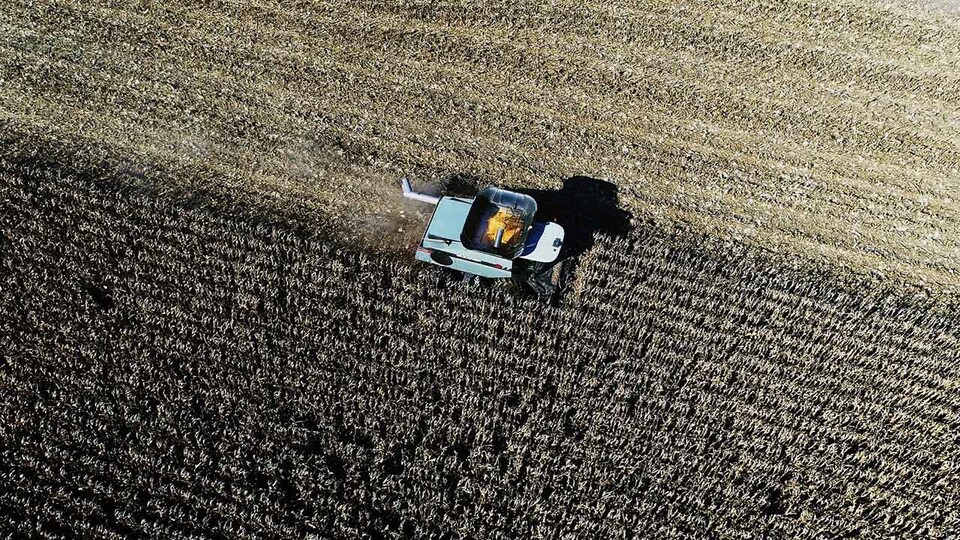Lincoln, Nebraska, USA
Jan. 18, 2022
 Much of the recent gain in corn yield is attributable to farmer adoption of improved management practices. - Courtesy photo | Nathan Thompson
Much of the recent gain in corn yield is attributable to farmer adoption of improved management practices. - Courtesy photo | Nathan Thompson
A multi-year analysis of Nebraska corn production by researchers in the University of Nebraska–Lincoln’s Institute of Agriculture and Natural Resources sheds new light on crop yield improvement and demonstrates the value of the university’s partnership with Nebraska ag producers and natural resources districts.
Plant genetics previously has received the most attention as a factor for improving crop yields. The new IANR analysis, which studied data for 3,000 irrigated fields in three Nebraska regions over a 15-year period, showed that climate and field management, rather than genetics, had far greater influence on increased crop productivity.
The findings indicate the need for a more balanced approach in the study of crop-yield factors by university and private-sector researchers, to provide proper consideration for climate trends and management practices, said Patricio Grassini, associate professor of agronomy and horticulture and one of the study’s six co-authors. That broader research approach can provide greater opportunities to boost crop yields and meet the growing global food demand.
The 15-year climate trend for the Nebraska cornfields included in the study accounted for 48% of the yield gain, IANR researchers found, while 39% stemmed from agronomic practices such as increased seeding rates and nutrient inputs and a shift toward corn-soybean rotations rather than continuous corn. Genetic factors accounted for only 13% of yield gains.
The partnership with Nebraska producers and natural resources districts, or NRDs, was vital in enabling IANR to use innovative analysis that identified the contributions to crop yield gains from individual factors such as climate, crop and soil management, and genetic improvement embodied in new hybrids. Such advanced analysis was made possible, Grassini said, by the combination of farmers’ well-managed, high-yield irrigated production plus the thoroughness and detail of the NRD data between 2004 and 2018.
The participating NRDs were the Lower Niobrara, headquartered in Butte; Tri-Basin, headquartered in Holdrege; and Upper Big Blue, headquartered in York. Together, the three districts provided a range of climate and soil conditions important to the study.
The NRDs’ partnership with IANR has shown farmers the practical value of the comprehensive data they provide regarding crop yields, seeding rates, nutrient application and other factors, said John Thorburn, general manager for Tri-Basin NRD. His NRD, he said, “has been collecting data from farmers for decades as part of our water quality program, but it’s been only in the last decade, in working with people like Patricio Grassini and Ken Cassman, that we’ve been able to show the tangible benefits to farmers.”
The Proceedings of the National Academy of Sciences is publishing the study, which is a collaboration between the Department of Agronomy and Horticulture and the Department of Statistics. Gonzalo Rizzo, a doctoral student in agronomy and horticulture supported by the Daugherty Water for Food Global Institute, is the study’s lead author. Co-authors are Grassini; Fatima Tenorio, postdoctoral research associate in agronomy and horticulture; Juan Pablo Monzon, research assistant professor in agronomy and horticulture; Réka Howard, assistant professor in the Department of Statistics; and Kenneth Cassman, professor emeritus of agronomy and horticulture.
The IANR study provides a better understanding not only of Nebraska agriculture, but of challenges to be addressed globally if crop yields on existing farmland are to increase to meet the major growth in worldwide food demand expected in coming decades. Nebraska agriculture, Grassini said, provides a useful model for identifying challenges to boosting crop yields globally, as the study illustrates.